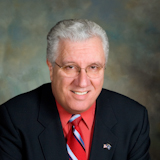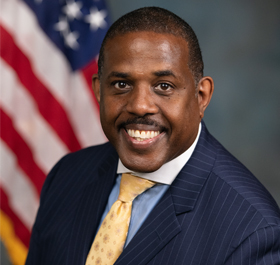S T A T E O F N E W Y O R K
________________________________________________________________________
1405
2015-2016 Regular Sessions
I N S E N A T E
January 12, 2015
___________
Introduced by Sen. MARCELLINO -- read twice and ordered printed, and
when printed to be committed to the Committee on Investigations and
Government Operations
AN ACT to amend the executive law, in relation to the definition of
"place of public accommodation, resort or amusement" for the purposes
of the human rights law
THE PEOPLE OF THE STATE OF NEW YORK, REPRESENTED IN SENATE AND ASSEM-
BLY, DO ENACT AS FOLLOWS:
Section 1. Subdivision 9 of section 292 of the executive law, as
amended by chapter 262 of the laws of 1994, is amended to read as
follows:
9. The term "place of public accommodation, resort or amusement" shall
include, REGARDLESS OF WHETHER THE OWNER OR OPERATOR OF SUCH PLACE IS A
STATE OR LOCAL GOVERNMENT ENTITY OR A PRIVATE INDIVIDUAL OR ENTITY,
except as hereinafter specified, all places included in the meaning of
such terms as: inns, taverns, road houses, hotels, motels, whether
conducted for the entertainment of transient guests or for the accommo-
dation of those seeking health, recreation or rest, or restaurants, or
eating houses, or any place where food is sold for consumption on the
premises; buffets, saloons, barrooms, or any store, park or enclosure
where spirituous or malt liquors are sold; ice cream parlors, confec-
tionaries, soda fountains, and all stores where ice cream, ice and fruit
preparations or their derivatives, or where beverages of any kind are
retailed for consumption on the premises; wholesale and retail stores
and establishments dealing with goods or services of any kind, dispen-
saries, clinics, hospitals, bath-houses, swimming pools, laundries and
all other cleaning establishments, barber shops, beauty parlors, thea-
tres, motion picture houses, airdromes, roof gardens, music halls, race
courses, skating rinks, amusement and recreation parks, trailer camps,
resort camps, fairs, bowling alleys, golf courses, gymnasiums, shooting
galleries, billiard and pool parlors; garages, all public conveyances
EXPLANATION--Matter in ITALICS (underscored) is new; matter in brackets
[ ] is old law to be omitted.
LBD00893-03-5
S. 1405 2
operated on land or water or in the air, as well as the stations and
terminals thereof; travel or tour advisory services, agencies or
bureaus; public halls [and], PUBLIC ROOMS, public elevators, AND ANY
PUBLIC AREAS of [buildings and structures occupied by two or more
tenants, or by the owner and one or more tenants] ANY BUILDING OR STRUC-
TURE. Such term shall not include [public libraries,] kindergartens,
primary and secondary schools, high schools, academies, colleges and
universities, extension courses, and all educational institutions under
the supervision of the regents of the state of New York; any such
[public library,] kindergarten, primary and secondary school, academy,
college, university, professional school, extension course or other
education facility, supported in whole or in part by public funds or by
contributions solicited from the general public; or any institution,
club or place of accommodation which proves that it is in its nature
distinctly private. In no event shall an institution, club or place of
accommodation be considered in its nature distinctly private if it has
more than one hundred members, provides regular meal service and regu-
larly receives payment for dues, fees, use of space, facilities,
services, meals or beverages directly or indirectly from or on behalf of
a nonmember for the furtherance of trade or business. An institution,
club, or place of accommodation which is not deemed distinctly private
pursuant to this subdivision may nevertheless apply such selective
criteria as it chooses in the use of its facilities, in evaluating
applicants for membership and in the conduct of its activities, so long
as such selective criteria do not constitute discriminatory practices
under this article or any other provision of law. For the purposes of
this section, a corporation incorporated under the benevolent orders law
or described in the benevolent orders law but formed under any other law
of this state or a religious corporation incorporated under the educa-
tion law or the religious corporations law shall be deemed to be in its
nature distinctly private.
No institution, club, organization or place of accommodation which
sponsors or conducts any amateur athletic contest or sparring exhibition
and advertises or bills such contest or exhibition as a New York state
championship contest or uses the words "New York state" in its announce-
ments shall be deemed a private exhibition within the meaning of this
section.
S 2. Paragraph (c) of subdivision 2 of section 296 of the executive
law, as added by chapter 394 of the laws of 2007, is amended to read as
follows:
(c) For the purposes of paragraph (a) of this subdivision, "discrimi-
natory practice" includes:
(i) a refusal to make reasonable modifications in policies, practices,
or procedures, when such modifications are necessary to afford facili-
ties, privileges, advantages or accommodations to individuals with disa-
bilities, unless such person can demonstrate that making such modifica-
tions would fundamentally alter the nature of such facilities,
privileges, advantages or accommodations;
(ii) a refusal to take such steps as may be necessary to ensure that
no individual with a disability is excluded or denied services because
of the absence of auxiliary aids and services, unless such person can
demonstrate that taking such steps would fundamentally alter the nature
of the facility, privilege, advantage or accommodation being offered or
would result in an undue burden;
(iii) a refusal to remove architectural barriers, and communication
barriers that are structural in nature, in existing facilities, and
S. 1405 3
transportation barriers in existing vehicles and rail passenger cars
used by an establishment for transporting individuals (not including
barriers that can only be removed through the retrofitting of vehicles
or rail passenger cars by the installation of a hydraulic or other
lift), where such removal is readily achievable; [and]
(iv) WHERE SUCH PERSON IS A LOCAL OR STATE GOVERNMENT ENTITY, A
REFUSAL TO REMOVE ARCHITECTURAL BARRIERS, AND COMMUNICATION BARRIERS
THAT ARE STRUCTURAL IN NATURE, IN EXISTING FACILITIES, AND TRANSPORTA-
TION BARRIERS IN EXISTING VEHICLES AND RAIL PASSENGER CARS USED BY AN
ESTABLISHMENT FOR TRANSPORTING INDIVIDUALS (NOT INCLUDING BARRIERS THAT
CAN ONLY BE REMOVED THROUGH THE RETROFITTING OF VEHICLES OR RAIL PASSEN-
GER CARS BY THE INSTALLATION OF A HYDRAULIC OR OTHER LIFT), WHERE SUCH
REMOVAL DOES NOT CONSTITUTE AN UNDUE BURDEN; EXCEPT AS SET FORTH IN
PARAGRAPH (E) OF THIS SUBDIVISION; NOTHING IN THIS SECTION WOULD REQUIRE
A PUBLIC ENTITY TO: NECESSARILY MAKE EACH OF ITS EXISTING FACILITIES
ACCESSIBLE TO AND USABLE BY INDIVIDUALS WITH DISABILITIES; TAKE ANY
ACTION THAT WOULD THREATEN OR DESTROY THE HISTORICAL SIGNIFICANCE OF AN
HISTORIC PROPERTY; OR TO MAKE STRUCTURAL CHANGES IN EXISTING FACILITIES
WHERE OTHER METHODS ARE EFFECTIVE IN ACHIEVING COMPLIANCE WITH THIS
SECTION; AND
(V) where such person can demonstrate that the removal of a barrier
under subparagraph (iii) of this paragraph is not readily achievable, a
failure to make such facilities, privileges, advantages or accommo-
dations available through alternative methods if such methods are readi-
ly achievable.
S 3. This act shall take effect on the one hundred twentieth day after
it shall have become a law.


